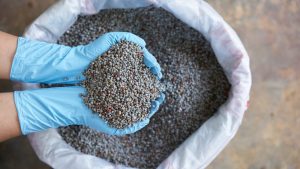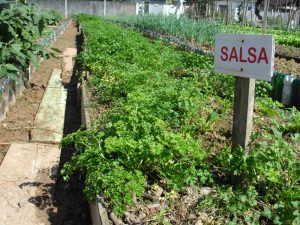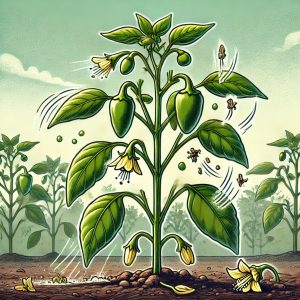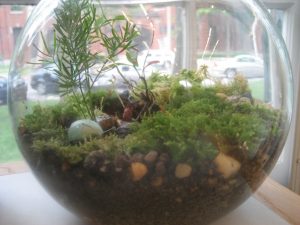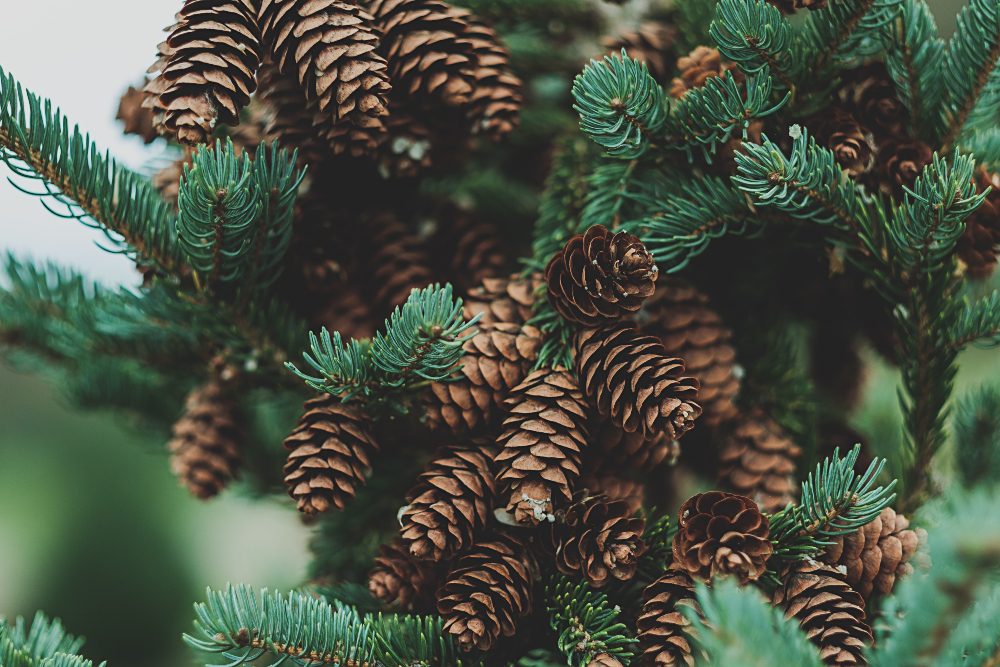
Pine trees, iconic symbols of the wilderness, are more than scenic beauties. These are a diverse set of trees, with each variety having its look and features.
In this guide, we explore the various facets of pine trees, delving into their different types, understanding their growth patterns, and offering practical care tips. For anyone keen on gardening, forestry, or simply appreciating nature, this article is a comprehensive resource on pine trees.
The World of Pine Trees
Contents
Pine trees are a remarkable and versatile group of plants, forming a significant part of our natural and cultivated landscapes. These evergreen conifers are known for their longevity, distinct needle-like leaves, and characteristic cones.
Belonging to the genus Pinus, pine trees are aesthetically pleasing and vital for ecological balance and economic purposes. This section introduces you to the fascinating world of pine trees, highlighting their essential characteristics and role in our environment.
What are Pine Trees?
Pine trees, a notable and diverse group within the more prominent family of conifers, fall under the genus Pinus. This remarkable genus encompasses more than 120 species, each uniquely adapted to thrive in a variety of climates and geographic locations.
These trees show incredible adaptation capabilities within the Northern Hemisphere or the coldest regions in the US. You are likely to see these trees among snow-blanketed hills and mountains.
Critical Characteristics of Pine Trees
Needles and Leaves: Pine trees are easily recognized by their needle-like leaves. These needles, often grouped in fascicle clusters, can vary in length and color depending on the species.
Pine Cones: Another distinctive feature is their cones. Pine cones, the reproductive organs, come in various sizes and shapes. These cones are the tree’s “fruits,” which contain their seeds.
Bark and Trunk: The bark of pine trees can be thick and scaly, offering protection against harsh weather and pests. The trunk, usually straight and tall, supports the tree’s robust structure.
Root System: Pine trees typically have a deep taproot with spreading lateral roots. This root system provides stability and helps in accessing deep soil nutrients.
Pine trees are more than just forest giants. They are integral to our world’s ecological balance, providing habitats, resources, and a foundation for numerous ecosystems. Understanding these majestic trees is the first step in appreciating their importance.
Diverse Varieties of Pine Trees
Pine trees, with their wide range of species, offer an incredible diversity in size, shape, and habitat preferences. Like other trees, pines come in different flavors or species. Each pine tree species has a distinct look and features that make it different. Below are the most common pine tree varieties you may encounter.
Eastern White Pine (Pinus strobus)
The Eastern White Pine, scientifically known as Pinus strobus, stands as a majestic and significant species among North American flora. It is not only admired for its aesthetic beauty but also valued for its historical and ecological importance. With its tall stature and graceful appearance, this species has a storied past that intertwines with human history and plays a vital role in forest ecosystems.
Origin and Distribution
Pinus strobus, native to eastern North America, is commonly found from Newfoundland in Canada down to the Appalachian Mountains in the United States. Its natural range and adaptability have made it a prominent feature in these landscapes.
Physical Description
Eastern White Pines are known for their impressive height, often reaching 80 feet or more, making them one of the tallest species in the eastern forests. The tree’s needles are soft, flexible, and typically grouped in five clusters, a distinctive trait. These needles are bluish-green, adding to the tree’s elegant appearance.
The bark of young trees is smooth and gray but becomes deeply furrowed and darker with age. The cones of the Eastern White Pine are slender, long, and usually not prickly, setting them apart from other pine species.
Challenges and Conservation
Despite its resilience, the Eastern White Pine faces challenges like the white pine blister rust, a fungal disease, and the pine beetle. Conservation efforts focus on managing these threats and preserving the species for its environmental and economic value.
The Eastern White Pine, with its towering presence and deep-rooted history, continues to be a symbol of strength and resilience. Its ecological, historical, and economic significance make it a vital species in North American forestry. Understanding and preserving this magnificent tree is essential for maintaining the health and diversity of forest ecosystems.

Scots Pine (Pinus sylvestris)
The Scots Pine, scientifically named Pinus sylvestris, is a species of pine with a wide distribution and a rich history. It’s known for its hardy nature and distinctive features, making it a prominent species in various landscapes. This tree has ecological, cultural, and economic significance in many regions.
Origin and Distribution
Native to Europe and Asia, the Scots Pine is widespread, spanning from Scotland to Siberia. It’s adaptable to various climatic conditions, contributing to its extensive geographical spread. This pine is often found in sandy soils and heathland environments, and it’s a key species in many boreal forests.
Physical Description
The Scots Pine is easily identifiable by its flaky orange-red bark and the twisted nature of its blue-green needles, which come in pairs. These trees can reach up to 35 meters in height, displaying a majestic and rugged appearance. The crown is typically rounded or flat-topped, giving it a distinct silhouette.
Conservation and Challenges
While not currently on the endangered list, the Scots Pine confronts several environmental challenges that threaten its existence. One of the primary concerns is habitat loss, a consequence of expanding urban development and changes in land use.
This loss of natural habitat poses a significant threat to the survival of this species. Diseases such as red band needle blight also impact Scots Pine populations, weakening the trees and making them more susceptible to other environmental stresses.
The Scots Pine’s conservation efforts focus on preserving and restoring its natural habitats. Protecting these areas ensures that the Scots Pine remains a part of the forest ecosystems where it has thrived for centuries. Efforts are also being made to manage forest health effectively, addressing disease and pest control to maintain robust Scots Pine populations.
The Scots Pine is more than just a tree; it’s an integral part of the forests of Europe and Asia. Its unique appearance and adaptability have made it an ecologically, economically, and culturally essential species. The Scots Pine contributes significantly to forestry and symbolizes the rich cultural heritage of the regions it inhabits. Therefore, understanding and conserving this species is paramount to preserving the health and diversity of the forest ecosystems it graces.
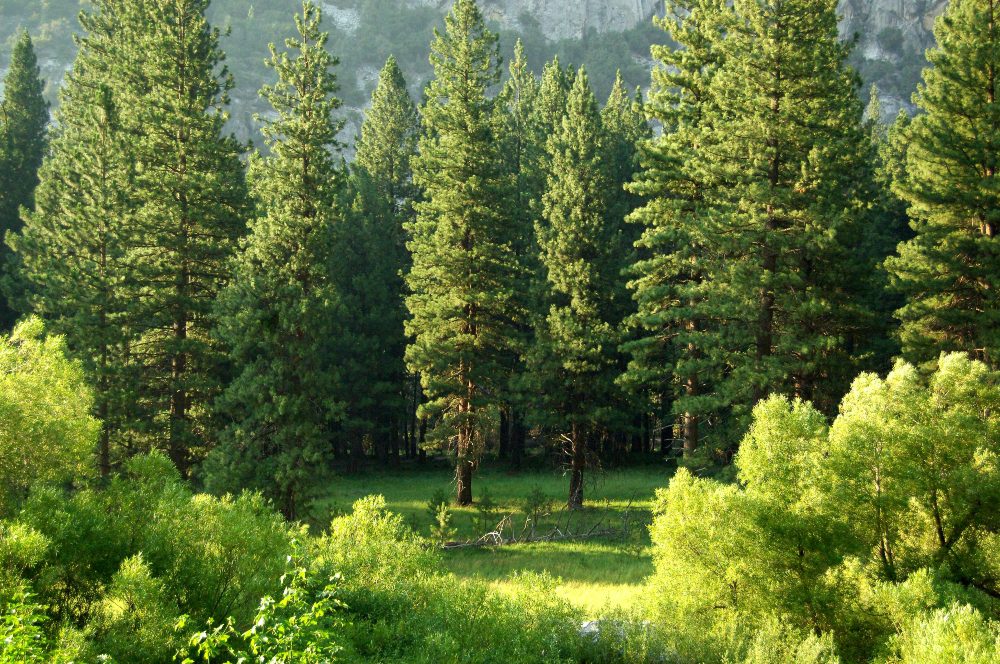
Ponderosa Pine (Pinus ponderosa)
The Ponderosa Pine, known scientifically as Pinus ponderosa, is a towering figure in the American landscape. Renowned for its size and the distinctive aroma of its bark, this species symbolizes the rugged American West. Its ecological, economic, and aesthetic values make it a significant species in its inhabited regions.
Origin and Distribution
The Ponderosa Pine is native to the western United States and is predominantly found across the Rocky Mountains and the Sierra Nevada. It thrives in various environments, from dry, lowland areas to moist, mountainous regions. This adaptability has allowed the Ponderosa Pine to become one of North America’s most widespread pine species.
Physical Description
One of the tallest and most massive pine species, the Ponderosa Pine can reach over 200 feet. The tree is known for its thick, orange-brown bark that smells like vanilla or butterscotch when warmed by the sun. Its needles are long, slender, and typically grouped in three clusters, presenting a bright green appearance.
Conservation and Challenges
The Ponderosa Pine faces forest fires, pine beetles, and disease threats. Climate change also poses a risk to its habitat. Conservation efforts focus on sustainable forestry practices and managing fire risks to maintain healthy populations of this vital species.
The Ponderosa Pine’s impressive stature and ecological significance are a cornerstone of North American forestry. It stands as a testament to the resilience and beauty of the natural world. Preserving this species is essential for maintaining the health and diversity of the forests it dominates and sustaining the wildlife that depends on it.
Lodgepole Pine (Pinus contorta)
The Lodgepole Pine, known scientifically as Pinus contorta, is a resilient and adaptable forest member. This species is particularly notable for its remarkable ability to thrive in challenging conditions and critical role in forest regeneration, especially following disturbances like forest fires. The Lodgepole Pine’s adaptability and resilience make it a vital species in maintaining the health and diversity of forest ecosystems.
Origin and Distribution
The Lodgepole Pine is primarily found in western North America, ranging from the Baja California in Mexico to the Yukon Territory in Canada. It’s a species well-suited to various habitats, from coastal rainforests to mountainous terrains.
Physical Description
This pine species is characterized by its slender, tall growth, often reaching heights of up to 70 feet. The needles of the Lodgepole Pine are short and often twisted, growing in pairs. The bark is thin and scaly, varying in color from dark brown to nearly black. The small cones can remain closed for years until triggered to open by the heat of a forest fire.
Conservation and Challenges
The primary challenge facing Lodgepole Pines is the mountain pine beetle, which can cause extensive damage to these trees. Climate change also poses a threat, altering the fire regimes these trees depend on for regeneration. Effective forest management and conservation strategies are essential to protect this species and the ecosystems it supports.
The Lodgepole Pine symbolizes resilience and renewal in the face of adversity. Its ability to regenerate after forest fires is a remarkable feature that underscores the dynamic nature of forest ecosystems. Preserving this species is crucial for maintaining biodiversity and the health of forest landscapes across North America.
Bristlecone Pine (Pinus aristata)
The Bristlecone Pine, or Pinus aristata, is a living testament to endurance and longevity in the plant kingdom. These ancient trees, some of the oldest living organisms on Earth, have an extraordinary ability to survive in the most inhospitable environments.
Origin and Distribution
Found in the high-altitude mountains of the western United States, Bristlecone Pines endure conditions that few other species can, making them a symbol of resilience and perseverance.
Physical Description
Bristlecone Pines are easily recognizable by their gnarled, twisted trunks and branches due to their adaptation to their harsh environment. They are relatively small, often growing between 8 and 20 feet. The needles of the Bristlecone Pine are short and grow in clusters of five. Its cones are small and stout, with each scale ending in a distinct bristle, giving the tree its name.
Conservation and Challenges
While Bristlecone Pines are not currently under significant threat, they are potentially vulnerable to climate change. Changes in temperature and precipitation patterns could impact their high-altitude habitats. Conservation efforts are focused on monitoring these changes and protecting the areas where these ancient trees grow.
With its ancient presence and remarkable survival skills, the Bristlecone Pine is a natural wonder. It reminds us of the resilience of life and the importance of conserving unique and irreplaceable species. Preserving the Bristlecone Pine ensures that future generations can continue to learn from and be inspired by these living links to our planet’s ancient past.
Longleaf Pine (Pinus palustris)
The Longleaf Pine, scientifically called Pinus palustris, holds a place of significance within the pine family. With its unique appearance and ecological importance, this species is indigenous to the southeastern United States. The Longleaf Pine has been instrumental in shaping the landscape and biodiversity of the region. Its role in the ecosystem is critical, providing habitat for various wildlife and contributing to the ecological balance of its native areas.
Origin and Distribution
Longleaf Pines are predominantly found in the coastal plains of the southeastern United States, stretching from Texas to Florida and north to Virginia. This species thrives in warm, humid climates and prefers well-drained, sandy soils, often seen dominating the region’s flatwoods and savannas.
Physical Description
The Longleaf Pine is notable for its exceptionally long needles, up to 18 inches long. These needles, typically grouped in bundles of three, give the tree a distinctive and lush appearance. The bark is thick and scaly, protecting against fire, a common occurrence in its natural habitat. The cones of the Longleaf Pine are also quite large, often exceeding 6 inches in length.
Conservation and Challenges
The Longleaf Pine has significantly declined due to logging, land conversion, and fire suppression policies. Efforts to conserve and restore Longleaf Pine ecosystems are underway, focusing on controlled burns to maintain the health of these forests and their biodiversity.
The Longleaf Pine is more than just a tree; it’s vital to a rich and diverse ecosystem. Its unique growth pattern and fire adaptation highlight nature’s intricate balance. Protecting and restoring Longleaf Pine forests is not just about preserving a species but maintaining the ecological integrity of a significant part of the American landscape.
Growth Patterns of Pine Trees
With their diverse species and widespread presence, pine trees exhibit various growth patterns influenced by their genetic makeup and environmental factors. Understanding these growth patterns is essential for forestry management, conservation efforts, and appreciating the adaptability of pine trees. This section explores the various aspects of pine tree growth, from their life cycle to the factors that influence their development.
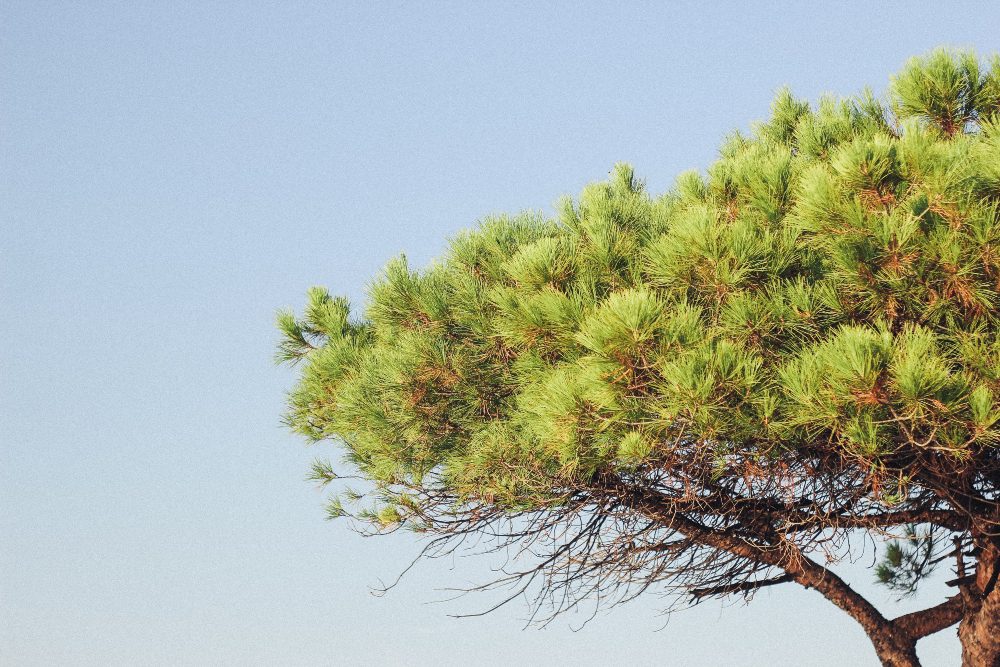
Life Cycle of Pine Trees
The journey of a pine tree from a tiny seed to a towering giant is a remarkable story of growth and adaptation. This journey begins when a seed, often encased in a protective cone, finds its way into the nurturing soil.
In the right conditions, this seed germinates, embarking on the first stage of its life as a fragile seedling. This initial stage is crucial and often challenging as the young pine competes for sunlight and nutrients.
As the seedling overcomes these early hurdles, it grows into a sapling. A notable increase in strength and size marks this stage. The sapling establishes a more robust root system, branching into the soil to anchor itself firmly. During this phase, the distinctive pine needles become more prominent, clothing the sapling in a vibrant green.
As the pine tree matures, it enters a phase of vigorous vertical growth. This is the tree’s way of reaching towards the sun, stretching upwards to capture more light. It’s a period of rapid development where the tree gains much of its height. Following this surge in growth, the tree spends time thickening its trunk and strengthening its structure, preparing for the years ahead.
The lifespan of pine trees is as diverse as the species themselves. Some, like the short-lived lodgepole pine, may live for just a few decades, fulfilling their ecological role swiftly. Others, like the awe-inspiring Bristlecone Pine, defy time, living for thousands of years, becoming silent witnesses to centuries of history.
Environmental Influences on Growth
The growth story of pine trees is deeply intertwined with their environment. Soil quality plays a foundational role; trees in rich, moist soils have the resources to grow faster and reach greater heights. In contrast, those in dry, nutrient-poor soils face a more challenging growth journey, often resulting in a stunted stature.
Water availability is another critical factor. Pine trees, like all living organisms, need water to thrive. The amount of available water influences the growth rate and can impact the tree’s overall health and ability to resist diseases.
Climate is perhaps one of the most influential factors in the life of a pine tree. Temperature and rainfall patterns dictate where different pine species can grow. Some species are adapted to the cold, snowy conditions of northern climates, while others are suited to the warmer, drier conditions of southern landscapes.
Adaptations to Fire
Many pine trees have adapted to survive and thrive in fire-prone environments. Species like the Lodgepole Pine and Longleaf Pine have developed unique strategies to regenerate after forest fires, such as serotinous cones that open to release seeds only after exposure to high temperatures.
Growth Rate Variations
Pine trees exhibit a wide range of growth rates, influenced by species, age, and environmental factors. Some species, like the Eastern White Pine, increase and can reach impressive heights relatively quickly. Others, like the slow-growing Bristlecone Pine, prioritize longevity over rapid growth.
\Human Impact on Pine Trees
Human activities, including logging, land development, and fire suppression, have significantly impacted the growth patterns of pine trees. Sustainable forestry practices and conservation efforts are essential to protect pine tree populations and ensure their continued presence in diverse ecosystems.
The growth patterns of pine trees are as diverse as the species themselves. From rapid vertical growth to slow, enduring development, pine trees showcase an incredible ability to adapt to their surroundings. Understanding these patterns helps us appreciate pine trees’ resilience and ecological importance in our natural landscapes.
Practical Care Tips for Pine Trees
Pine trees, known for their majestic presence and resilience, require specific care to thrive. Whether you’re a gardener, a landscaper, or simply a pine tree enthusiast, understanding how to care for these trees is crucial. This section provides practical tips for maintaining healthy pine trees and ensuring their growth and longevity.
Ideal Soil and Climate Conditions
Pine trees generally prefer well-drained, slightly acidic soils. They thrive in various climates, but each species has its specific preferences. For instance, the Ponderosa Pine does well in dry, mountainous regions, while the Eastern White Pine prefers cooler, moist environments. Researching the specific needs of your pine tree species is essential for its successful growth.
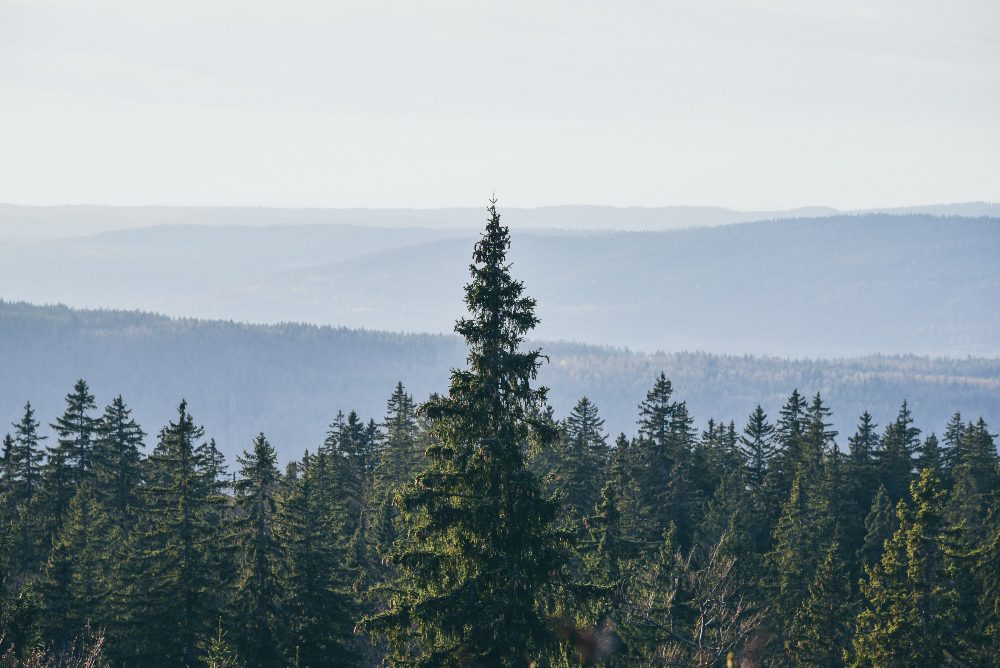
Planting and Spacing
When planting pine trees, consider the species’ mature size to determine the appropriate spacing. Ensure that each tree has enough room to grow above and below ground. Planting pine trees in the right location, away from buildings and power lines, is crucial to avoid future complications.
Watering and Mulching
Young pine trees need consistent watering to establish their root systems. Once installed, most pine trees are drought-tolerant, but additional watering may be beneficial during prolonged dry spells. Mulching around the base of pine trees helps retain soil moisture and reduces temperature fluctuations.
Pruning and Maintenance
Pruning is generally not required for pine trees except to remove dead or damaged branches. If pruning is necessary, it should be done in late winter or early spring before new growth begins. Avoid heavy pruning, which can stress the tree and lead to disease. In addition, use high-end pruning tools to ensure the proper removal of pine tree parts.
Monitoring for Pests and Diseases
Regularly inspect your pine trees for signs of pests or diseases. Common issues include pine beetles, needle blight, and root rot. Early detection and appropriate treatment are vital to managing these problems effectively.
Fertilizing
Pine trees typically don’t require frequent fertilization, especially when planted in fertile soil. A balanced, slow-release fertilizer can support growth in the spring.
Caring for pine trees involves understanding their needs and responding to their growth patterns and environmental conditions. With the proper care and attention, pine trees can be a long-lasting and rewarding addition to any landscape, offering beauty, shade, and ecological benefits.
Conservation and Future of Pine Trees
Pine trees, integral to many ecosystems worldwide, face numerous challenges, including climate change, deforestation, and disease. The conservation of these majestic trees is vital for maintaining biodiversity, ecological balance, and the countless benefits they provide. This section discusses the efforts and strategies in place for pine tree conservation and what the future may hold for these critical species.
Environmental Impact of Pine Trees
Pine trees play a crucial role in their ecosystems. They provide habitat for wildlife, help in soil conservation, and contribute to the carbon cycle. Pine forests also serve as critical recreational spaces and support various industries. Preserving these trees is essential for environmental health and the well-being of numerous species, including humans.
Threats to Pine Trees
Pine trees face several threats. Climate change alters habitats and weather patterns, affecting the distribution of pine trees and health. Diseases like pine wilt and pests like the pine beetle are causing significant damage to pine forests. Deforestation for agriculture and urban development is another primary concern, leading to habitat loss.
Conservation Efforts
Conservation efforts for pine trees include habitat protection, sustainable forestry practices, and breeding programs to develop disease-resistant varieties. Controlled burns maintain the health of fire-adapted species like the Longleaf and Lodgepole Pines. Restoration projects aim to replant pine trees in areas where they have been depleted.
Research and Monitoring
Ongoing research is crucial to understand the challenges facing pine trees. Studies on climate adaptability, pest and disease resistance, and genetic diversity help develop effective conservation strategies. Monitoring pine tree populations and health helps in the early detection of problems and timely intervention.
Community Involvement and Education
Community involvement is critical to pine tree conservation. Public education about the importance of pine trees and how to care for them encourages community-led conservation efforts. Citizen science projects and local conservation initiatives play a significant role in protecting pine forests.
The Future of Pine Trees
As we gaze into the future, the fate of pine trees rests heavily on the shoulders of our global community and collective actions. The challenges posed by a changing climate and evolving land use patterns demand a flexible and proactive approach to conservation. We must focus on strategies to adapt and respond to these shifting conditions.
This involves global efforts to reduce greenhouse gas emissions and local initiatives that increase the resilience of pine forests to climate impacts. Sustainable land use practices are equally important. They ensure that pine tree habitats are managed to balance ecological health with human needs.
Conserving pine trees is crucial for ecological balance, biodiversity, and the numerous benefits they provide. By addressing the challenges they face through research, sustainable practices, and community involvement, we can help ensure a healthy future for pine trees and the ecosystems they support.
FAQ on Pine Trees Varieties and Care
What are pine trees?
These are part of the genus Pinus family of trees called the evergreen coniferous tree. They are known for their needle-like leaves and conical shape.
Where are pine trees commonly found?
Pine trees make their home in the Northern Hemisphere, where temperatures can significantly drop. However, other species have entered unusual environments, such as deserts.
How long do pine trees live?
The lifespan of pine trees varies significantly by species. You have ones that can live longer than other species, such as the Bristlecone Pine.
What are the common uses of pine trees?
Pine trees are widely used for timber, paper production, and resin. They are also popular in landscaping and as Christmas trees.
Are pine trees susceptible to any diseases or pests?
Yes, pine trees can be affected by various diseases and pests, including pine beetles, needle blight, and root rot.
How can I identify different pine tree species?
Pine trees can be identified by needle length, cone size and shape, and bark texture. Each species has distinct features.
What are some challenges facing pine trees today?
The most common issues pine trees face today are pests and diseases. On a global scale, many of these trees are facing climate change across the globe.
How can pine trees be conserved?
Conservation efforts include sustainable forestry practices, habitat protection, breeding disease-resistant varieties, and community education.
Why are pine trees important to ecosystems?
Pine trees provide habitat for wildlife, help in soil conservation, and play a role in the carbon cycle. They are crucial for maintaining ecological balance.
Conclusion
In this comprehensive exploration of pine trees, we have uncovered this remarkable genus’s rich diversity and significance. Their importance in ecosystems, cultural heritage, and the economy underscores the need for continued conservation efforts. By appreciating and protecting pine trees, we ensure these majestic and resilient species continue to thrive for generations.

